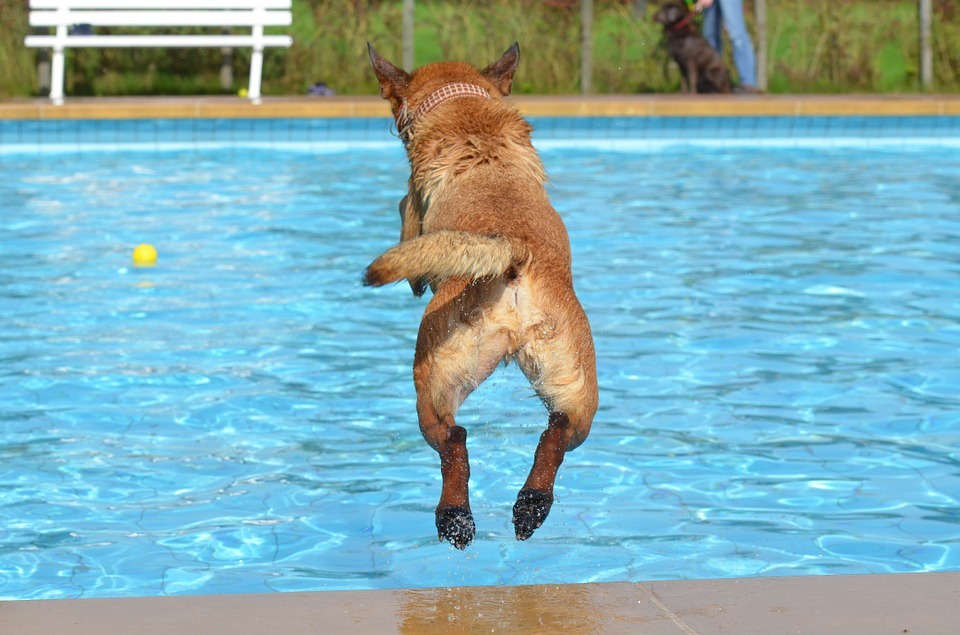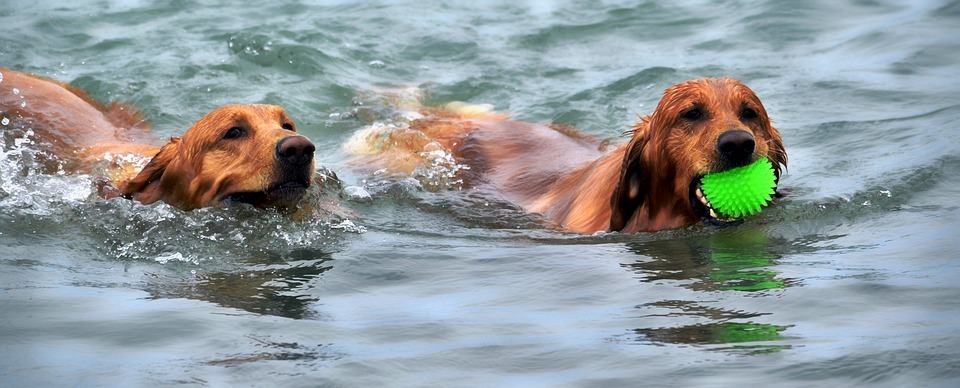Just like for humans, swimming can also be a fun activity for dogs. It is a great way to stay cool during hot days. They can chase after sticks and balls while spending time with your family. But taking your dog swimming entails a lot of responsibilities too because there are a lot of dangers and warning signs you should remember before taking your dog swimming. We are here to give you a list of safety tips when taking your dog for a swim.
1. Start out with your dog slowly
If it’s your dog’s first time to go swimming, do not take him to the deep end immediately. You should give your dog some time to adjust and figure out how to swim. You should let him feel comfortable in the shallow water first before going swimming in deep water. You wouldn’t want him to be stressed and anxious in the water or else he would not swim. Also remember that not all dogs can swim, their ability to swim depends on the built of their body. Bulldogs have a hard time to stay afloat because of their short legs and small dogs like chihuahuas can be overwhelmed by strong currents and waves because they are little. You may want to bring a dog life jacket with you to help your little puppy stay afloat.
2. Do not let your dog drink from lakes and ponds
Whenever you want to spend time with your dog to go swimming, always remember to bring plenty of fresh water for them. Water in the lake, swamps, ponds, and rivers are mostly contaminated with different harmful organisms. If your dog ingested the contaminated water, the microorganisms can lead to diarrhea or in severe cases, your dog might catch a Leptospira, an illness that can be fatal to dogs. So remember to pack plenty of clean water to keep your dog safe and hydrated.
3. Don’t let your dog drink ocean water
Just like waters from lakes and ponds, salt water is also dangerous for your dogs when ingested because it has an osmotic effect that can pull liquid into your dog’s intestines. This can resolve to diarrhea and vomiting that can lead to dehydration. Beach diarrhea is severe and comes on fast. This causes dogs to be dehydrated quickly. And ingesting too much salt water can also be dangerous to your dogs because it can damage your dog’s kidney which can be fatal. That’s why you always need to bring clean and fresh water for your dog to drink.
4. Never leave your dog unattended in the water
You also have to keep a watchful eye on your dog when they are swimming just like how you keep an eye out on your kids when they’re in the water. You should be near your dog in case any emergencies happen. For example, if your dog got caught up in strong currents or got exhausted, you will be able to help them quickly.
5. Get your dog a life vest
If you are just starting to teach your dog how to swim, it is best to have them wear a life vest first. Just like what we said earlier, there are types of dogs who have difficulties in staying afloat and there are dogs who are too little for the waves and currents. Even big dog breeds have a tendency to sink in the water, so a life jacket is a must have to keep them safe all the time. Finding the right life vest that will fit your dog can be a little difficult, especially if your dog has an atypical measurement. Therefore, we suggest you take your dog with you when you’re going life vest shopping so you can get the right fit for your dog.
6. Take breaks so your dog will not get exhausted easily
Chasing after a ball, swimming, jumping, can be a lot of fun for your dog. But it is important to remember to take frequent breaks to help prevent exhaustion. Give your dog plenty of water to cool himself down.
7. Be aware of stagnant water
Water in the rivers and lakes can become stagnant during summer. This can be dangerous because it can increase the risk of encountering brain-eating amoeba. So keep an eye out on your dog in case he comes near to stagnant waters.
8. Dry your dog’s ears
Water left in your dog’s ears- especially if your dog has floppy ears- can cause ear infections. If you know that your dog is prone to ear infections, you can talk to your vet about a solution that you can carry around when you go swimming to keep your dog’s ear clean and water free.
9. Watch out for blue-green algae
Also known as cyanobacteria, these blue-green algae are bacteria that are mostly found in freshwater ponds and lakes. It creates toxins that are dangerous to humans and animals. If your dog had an exposure or have ingested water that is contaminated with blue-green algae, it can result in something fatal. Unfortunately, these bacteria are hard to spot unless they are all piled together. It looks like there are green or brown flakes sitting on top of the water and they turn into blue-green films when they fully bloom. It is best to keep your dog away from the shoreline or water if you see any suspicious looking algae.
10. Wash or rinse your dog after swimming
Washing your dog after swimming can help get rid of any bacteria that is left on their fur. If your dog is not properly cleaned after swimming, they could ingest some nasty stuff that they picked up from swimming. Washing your dog after can also help get rid of chemicals, sand, or any other debris that are left on their fur. This will also help prevent itchiness and rashes.
Swimming is a great exercise for dogs and it is the perfect way to bond while you cool off the heat of the summer. You can take them to the beach or a dog-friendly pool. Just remember these tips we listed for you to keep your fur babies safe from any harm or illnesses.


